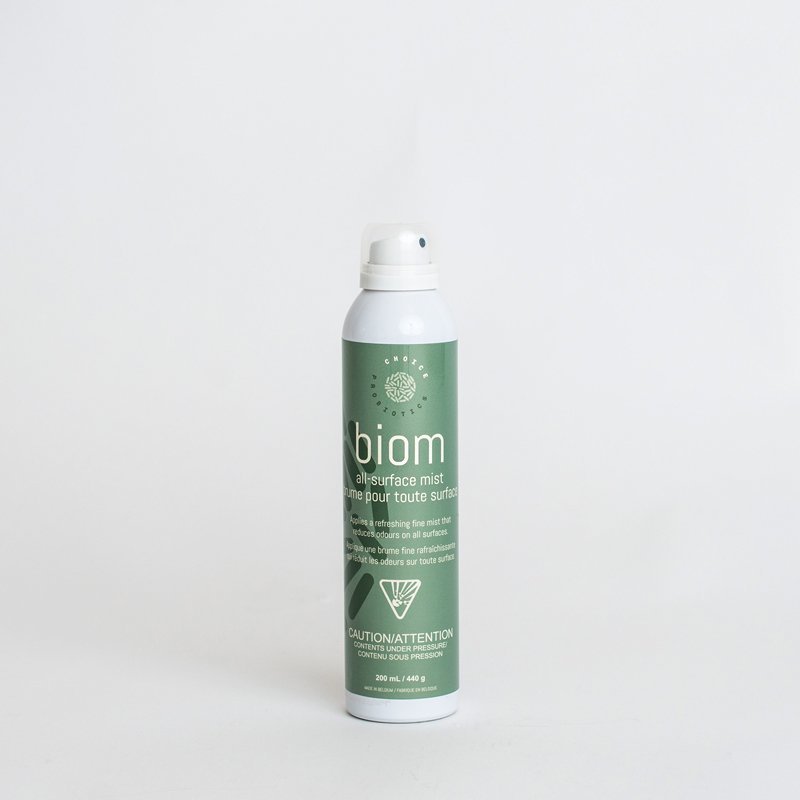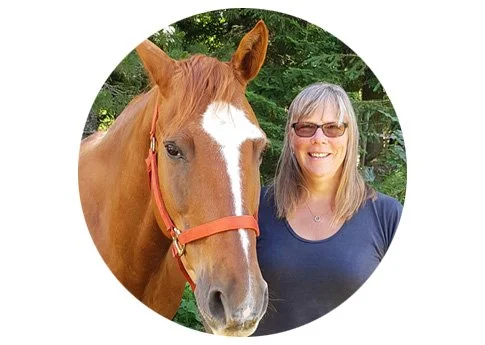How I use environmental probiotic cleaning products on my farm and animals.
Coby sedated for wound cleaning/packing. Right - after treatment with probiotic spray… virtually no scar!
As always….the following information should not take the place of Veterinarian care.
A BIT OF HISTORY…
I was first introduced to Chrisal probiotic products (now branded as “Biom”) about ten years ago. At that time the products were new to Canada and the concept was very new to me.
The thought of scrubbing away those nasty disease-causing germs (aka pathogenic matter) and leaving behind probiotic and prebiotic bacteria (friendly bugs) was very interesting to me. I learned that antimicrobial cleaners — while cleaning a surface — actually create an opportunity for them to populate rather quickly making the surface MORE vulnerable to pathogens immediately after applying them. If you want to understand this a bit better, I’ve included more scientific description of the process at the bottom of this post.
I was thrilled with BIOM All-Surface Mist (and still am) for so many uses. Of course I use it on couches, car seats, dog beds but I also use it directly on WOUNDS.
Years ago, I was stepped on by one of the horses and was loosing my big toe nail… it was wet and leaking serous fluid. I directly sprayed the All-Surface Mist on my toe, within hours it dried up. I sprayed the wound daily for a few days and the speed of healing was astounding. Since then I’ve used it on the most hideous of wounds and it has performed amazingly!
Of course this is an off label use and I cannot advise anyone to do what I did. 🙄
But…. It works incredibly well! 😉
When one of our EAL program horses Coby injured his ear this spring I was presented with the perfect opportunity to try All-Surface Mist probiotic spray on this very difficult (and deep!) wound.
For the first few days I had to sedate him, cleaned the wound and packed it the old fashioned way by ‘removing all the bacteria’. It got pretty difficult to keep sedating him (hard on him and us) so I thought “worth a try!” The wound filled in over night and dried up barely leaving a scar! Wow! Even though I had used it on myself more than a few times I was still amazed and so happy for this new tool in my animal first aid toolbox.
I also use Biom Laundry Soap, Hand Soap, and Animal Housing Cleaner exclusively and so decided to add them to my store. The Biom Pro Economic has a bit of a degreaser in it and works beautifully on grout!
The Animal Housing Cleaner is a staple around my farm and is used to clean cat boxes, dog beds, saddle blankets, water troughs, chicken coops and feeders etc. But I use it in the house as well… as my house does HOUSE animals after all both the four legged kind and the two legged 😉. I love the fact that there’s just a very light fresh scent and it leaves behind a world of FRIENDLY bacteria for days after (the probiotics work to populate surfaces and a continue to clean for up to 5 days!)
SKIN BARRIER REPAIR
A clinical study conducted in the USA by Dr. Jean-Philippe Therrien on Chrisal's prebiotic+probiotic formulation showed that after skin irritation, the skin barrier was repaired more quickly. After three days there was already a noticeably better recovery of the skin compared to the control. A quick repair of the skin barrier is important for the prevention of infections of damaged skin. In addition, intact skin also has visual advantages because the skin looks healthier and more beautiful.
Literature:
Savitskaya et al 2019. Helyon. (Skin repair by Bacillus subtilis)
The clinical studies conducted by Enviotic Ltd. and Chrisal are being expanded and the results will be published in the future.
Chrisal (Biom) products contain an absolute minimum of 50 million probiotics per ml. Certain products go up to half a billion per ml! The prebiotics and prebiotics also have to survive the entire life of the product. Chrisal is by far the market leader in stability and gives all its products a shelf life of at least 3 years!
WANT TO DIG DEEPER?
As a former ER nurse I admit I like to understand how things work….
Competitive Exclusion
The non-toxic detergents help you remove surface dirt and debris. Then the probiotics go to work, cleaning down to the microscopic level. The probiotic cleaning products quickly populate the space harmful and odour causing microbes for food. Without spaces to grow into, and a reduced food supply, the harmful and odour causing microbes cannot repopulate.
click to englarge
Quorum Sensing
When the probiotics sense that their food and space resources are being depleted, they send out quorum sensing signals to each other, which slows the growth of all microbes on a surface. This makes it even more difficult for harmful germs to survive. Routine cleaning with the probiotic cleaners ensures they remain the dominate micro-organism.
Biofilm Removal
click to enlarge
The Biofilm provides a hiding place for many types of harmful microbes by forming a protective shield from chemical and mechanical removal. The probiotic cleaning products use biofilms as a food source, thus easily removing it! For 3-5 days after cleaning, the probiotics continue to ‘nibble away’ at biofilms, rapidly reducing odours and significantly decreasing risk of infection.
-
Biofilms are microscopic layers that entrap dirt, viruses, harmful bacteria, moulds, and odour causing microbes. The microscopic layers of biofilm form on virtually any wet or dry surface, and are extremely difficult to remove. They embed in fabrics, plastics, foam, matting, cushions, and clothing. They adhere to hard surfaces such as shower/tile grout, and flooring, often making it very slippery. Research shows biofilms are often present on dry, disinfected surfaces, such as electronic devices and countertops and emit the harmful microbes and odours into a facility.
-
Disinfectants and harsh chemical cleaners do not remove biofilm completely, at best they only burn off the top layers. When disinfectant cleaning supplies are used on biofilms, the biocidal chemicals cause the biofilm matrix to become chemically resistant. This makes the pathogens within the biofilm even more chemically resistant, increasing antimicrobial resistance which is known to directly foster an increase in antibiotic resistance. This creates Superbugs. Reducing antibiotic resistance includes taking steps to reduce the use of antimicrobial products such as disinfectants and sanitizers.
-
Using toxic or corrosive cleaners to remove biofilm is ineffective, and damages surfaces, equipment, harms people and the environment while increasing bacterial resistance. A safer, more effective and sustainable method is to use PIP probiotic cleaners. PIP’s probiotic bacteria use biofilm as a food source. Once the probiotics are placed onto a surface, they release enzymes. These enzymes quickly break down biofilm into bite-size chunks, enabling the probiotics to quickly consume it. This process continues for 3-4 days after the probiotic products are applied. This action results in continuous biofilm removal leaving a surface which is not harbouring a reservoir of harmful microbes.
Until next time,
Leah Hope







